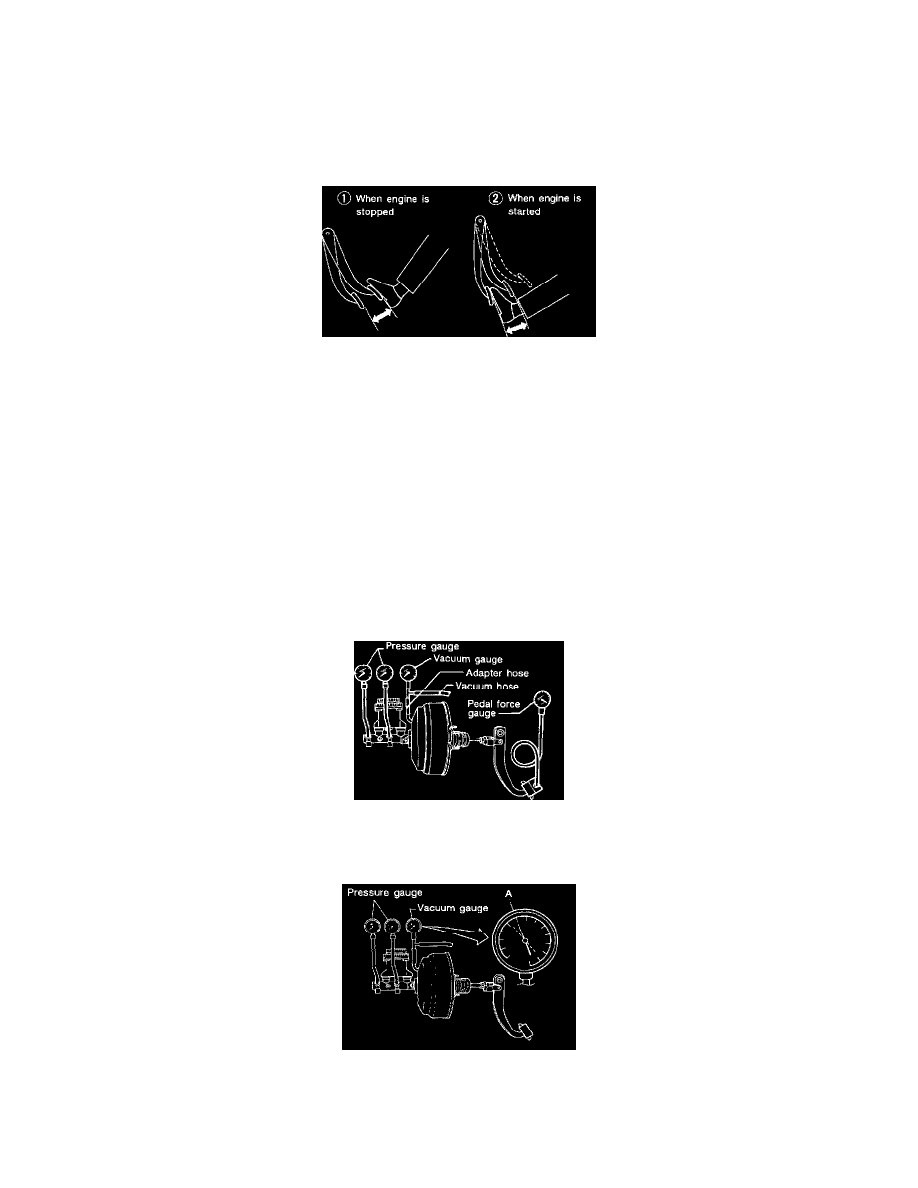Legacy GT LTD Sedan AWD F4-2.5L DOHC (1998)

change occurs in the pedal height while in a depressed state, brake booster is faulty.
NOTE:
-
In the event of defective operation, inspect the condition of the check valve and vacuum hose.
-
Replace them if faulty and conduct the test again.
-
If no improvement is observed, check precisely with gauges.
3. Operation Check
1. With engine off, depress brake pedal several times applying the same pedal force and make sure that the pedal height does not vary with each
depression of the pedal.
2. With brake pedal depressed, start engine.
3. As engine starts, brake pedal should move slightly toward the floor. If no change occurs in the pedal height, brake booster is faulty.
NOTE: If faulty, check precisely with gauges.
4. Loaded Air Tightness Check
Depress brake pedal while engine is running, and turn off engine while the pedal is still depressed. Keep the pedal depressed for 30 seconds; if no
change occurs in the pedal height, brake booster is functioning normally; if the pedal height increases, it is faulty.
NOTE: If faulty, check precisely with gauges.
CAUTION: When checking operation, be sure to securely apply the hand brake.
5. Checking With Gauges
Connect gauges as shown in Figure. After bleeding air from pressure gauges, proceed to each check.
6. Air Tightness Check
1. Start engine and keep it running until a vacuum of 66.7 kPa (500 mmHg, 19.69 in Hg) = point A is indicated on vacuum gauge. Do not depress
brake pedal.
2. Stop engine and watch the gauge. If the vacuum drop range is less than 3.3 kPa (25 mmHg, 0.98 in Hg) within 15 seconds after
